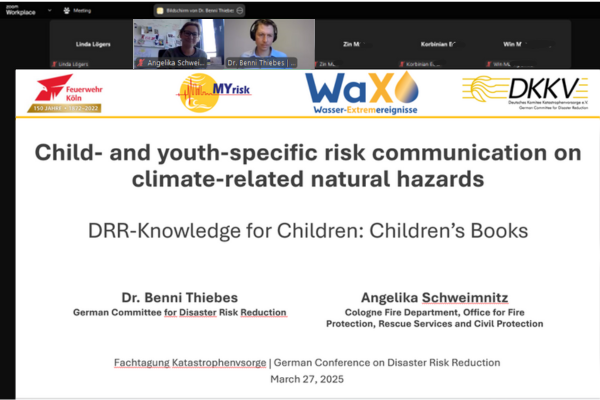As part of the Disaster Risk Reduction Conference, a session titled “Child- and youth-specific risk communication on climate-related natural hazards” took place yesterday. This session focused on the specific requirements for risk communication aimed at children and youth in relation to climate-related natural hazards. Prof. Dr. Frauke Kraas from the University of Cologne began by presenting the MYrisk project, which focuses on improving risk awareness and understanding among children and youth in rapidly growing (mega-)cities in Myanmar. After the introduction, participants had the opportunity to explore four different age groups, from kindergarten to university.
The DKKV and Angelika Schweimnitz from the Institute for Protection and Rescue of the Cologne Fire Department presented the approach of educational work for children through literature, specifically “Children’s books on risk communication” and introduced the Pixi-Wissen (“Knowledge”) book developed within the DKKV WaX project on the topics of Heavy Rain and Drought. The subsequent discussion primarily focused on the challenges of creating children’s books on such complex topics in a way that makes natural hazards understandable for children. A key topic was the transferability of children’s books, where not only language but, more importantly, cultural adaptation must be considered. Other important aspects included the need for an engaging storyline that allows children to identify with the characters and themes, as well as the technical and financial possibilities for distributing the books. The discussion made it clear that there is strong interest in such projects, but there is still little experience with risk-targeted children’s books in the German-speaking world.
In a final round, the central findings from the different age groups were summarized and collected in a concept board on age-appropriate risk communication.
Once the session recording is available, we will provide the link here.


